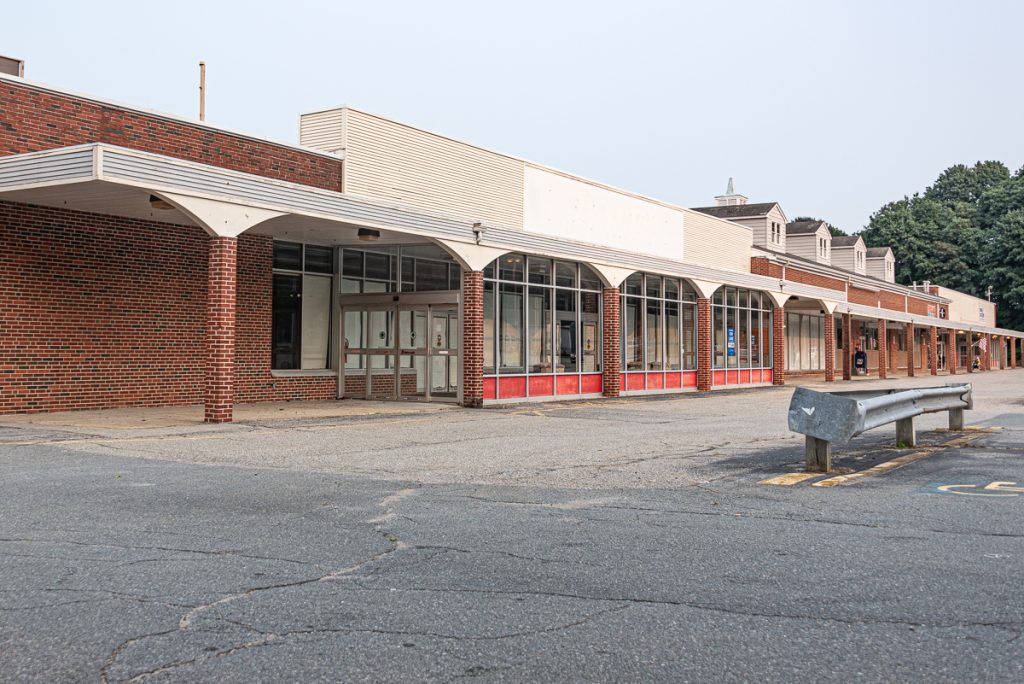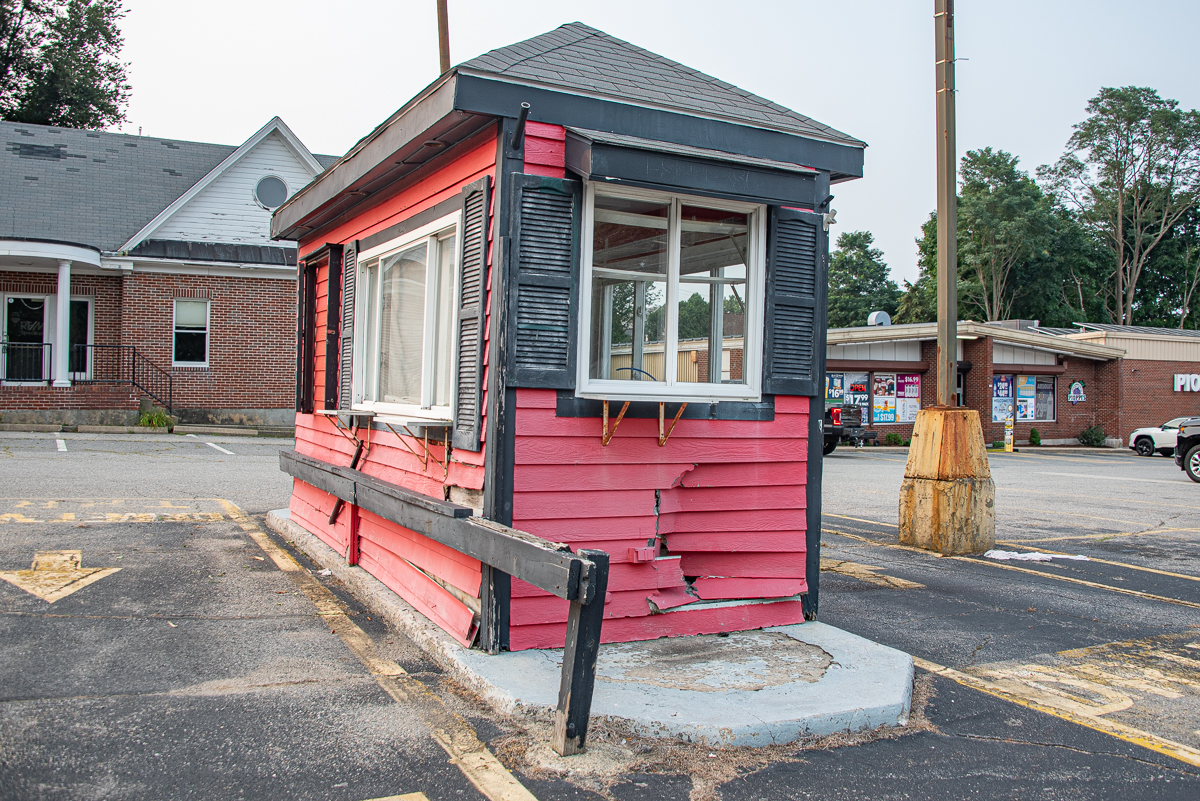Editor’s note: Unlike our news stories, this column also includes the author’s opinions.
“Change” is the word of the year in Plymouth. Maybe the word of the decade. Plymouth is changing. Plymouth has changed. It’s changed too much or too little. It’s changed for the worse, for the better.
Embrace it, rail against it, help shape it. Whatever your take or tact, change is – of course – unavoidable.
These days, many people’s reaction to it – or anything else they don’t like about town – involves social media. It’s where they lament and vent and accomplish nothing. Which is what made the visceral response to a Boston developer’s preliminary plans for Benny’s Plaza so interesting. A throng of unhappy residents showed up at an August ambush – thinly disguised as a meeting – to essentially run the man out of town. Jay Doherty, CEO of Cabot, Cabot & Forbes, proposed building hundreds of apartments on the asphalt wasteland known as Benny’s Plaza. It wasn’t an attractive proposal by any measure, but perhaps a starting point for further discussion. The audience wasn’t interested. Doherty got the message.
But something must fill the commercial space off Court Street besides weeds sprouting through cracks in the pavement. The real estate market has been blazing for years. Plymouth’s growth rate is accelerating like a sprinter’s heartbeat. But the town’s response hasn’t kept pace. Too often it’s defaulted to a reactive mode. That’s one reason why many residents believe officials have acceded to the demands of “greedy” developers. While new work sites are cleared for construction, some old ones languish. (How long has that bulldozed land at Cranberry Crescent remained empty?) Failure to repurpose dormant commercial lots costs the town money through lost opportunities.
Let’s consider the inexorable decline of the 7.2-acre Benny’s Plaza as a case study in the development challenges facing Plymouth.
Right off, we can – again – dispense with a popular fantasy: Benny’s is not coming back, despite those persistent pangs of nostalgia some can’t shake. The Rhode Island-based chain closed all 31 locations in 2017 because not enough people were spending money at its stores. As for Trader Joe’s, there is no sign that the company plans to open a Plymouth store. And if it decided to, you can bet that Benny’s Plaza – on a secondary road in a lifeless strip mall – would not be the place.
After that Cordage meeting, the Facebook crowd offered up a barrel of other ideas for the land. Mostly, they demonstrated a basic ignorance of marketplace economics.
Besides TJ’s, there were votes for a Whole Foods or Costco. Other suggestions included a flea market, an arcade, a roller skating rink, a miniature golf course, an indoor drive-in theater (with midnight showings of Eli Roth’s 2023 slasher film “Thanksgiving,” perhaps?), a homeless shelter, and a campground.
Yes, a campground.
Perhaps the most audacious idea came from Dick Quintal, chair of Plymouth’s Select Board. He told the Independent’s Andrea Estes that the town should buy the privately owned site, which is assessed at more than $5 million and would probably sell for considerably more.
“It’s a link to the waterfront,” Quintal said. “It joins the rail trail. They could have a satellite park there.”
In a perfect world, maybe. But Quintal must know it wouldn’t be smart for the town to borrow money for the purpose of taking a major commercial tract out of play. Especially at a time when residential taxpayers are shouldering an increasingly heavy burden. Plymouth just redid Stephens Field at a cost of $5 million, and Nelson Park is close to the Benny’s property. Turning a massive parking lot on low-lying land into another public space would cost a fortune, require expensive maintenance, and do nothing to help create good jobs or affordable housing – both major priorities.
I wanted to talk about all this with Lee Hartmann, the town’s longtime director of planning and development. He spoke with me about the plaza in June and said he’d like to see a so-called mixed-use development. “Something that creates jobs,” he said. “If it has to have residential, our preference would be…having as much commercial space there as possible. Another high-density residential development would be a hard thing for the community to deal with.”
This time, though, Hartmann told me he needed to involve Town Manager Derek Brindisi before getting on the phone. The next day I received an email message from Casey Kennedy, the town’s newly hired communications coordinator.
“The town does not have any further information on what may happen with the Benny’s Plaza parcel,” she wrote. “However, you have a great story regarding basic economics and how towns face balancing growth, preservation, and development and we will be happy to comment at a future date when we have further information.”

Fortunately, Planning Board chair Steve Bolotin isn’t restricted from speaking about development issues. When it comes to the plaza, Bolotin, too, is in the mixed-use camp. “It should still remain, at least in significant part, commercial space,” he said.
Bolotin doesn’t mean building a lot of retail. He believes Plymouth can become the “retail medical epicenter” of this part of the state by creating jobs that pay enough for people to stay here and raise a family. A seasonal mini golf business won’t do that.
“Medical can be laboratory, orthopedics, or an X-ray or a CT facility,” he said. “Traffic-wise, it wouldn’t be as heavy a use [as retail or residential].”
That could serve the town’s burgeoning population of older people while at the same time adding jobs that offer more potential for younger workers than stocking shelves in a grocery store. Building housing they can afford syncs with the approach.
“We need to have jobs that make sense for people so that we encourage the next generation to come here,” Bolotin said. “Otherwise, Plymouth will end up just becoming a summer community for those who can afford to do so. And much like the Cape, everybody will leave in the winter, leaving only those with no option to stay.”
Bolotin’s vision includes walk-in medical services on the first floor, and maybe medical offices and treatment areas on the second. Some traditional retail space – a small market or clothing store, perhaps – would also fit.
If the buildings are taller – say three or four stories – there could be a residential component.
“One of the advantages, height-wise, is you’re really not blocking anyone from anything,” he said. “And if you tack on the fact that it backs on to what could be an extension of the rail trail, you could help [extend] that from a public access standpoint.”
As for the notion of a park, “it would be lovely,” Bolotin said, except “we just spent an outrageous amount of money redoing Stephen’s Field. It would make no sense to say we’re going to spend five-plus million dollars just to purchase the property. I don’t know what the retail market value is, but it’s obviously going to be higher.”
And turning those acres into green space would cost many millions more on top of the sale price.
In addition to his Planning Board duties, Bolotin serves on the Master Plan Committee, which is thinking in “bigger picture” terms about issues such as job creation, housing, environment, and land preservation. Benny’s represents “a kind of a microcosm of what Plymouth residents are asking for,” he said. “They’re saying to us, we want reasonable commercial development. We want housing that makes sense for our community, and we want to preserve our open spaces and make sure that we have that long term resilience that we need – whether that be climate change or our sole source aquifer needs.”
Harrison Quinn, a member of the Plymouth Center Steering Committee, has also spent a lot of time pondering what might work for the Benny’s site. In a presentation on what he called a “very charged topic,” Quinn outlined his ideas, most of which are in line with Bolotin’s. He agrees that the address is no longer a prime one for old-style retail, like a big-box store.
He’s calling for “more workforce housing for Plymouth’s working and middle class,” along with retail space “to add to Plymouth’s tax base.”
Quinn imagines up to 12 duplex-style units “modeled after 20th century mill housing, of which the Cordage Museum still has original blueprints for. It would not drastically alter the look and feel of the neighborhood. In fact, it would create a connection to an often-overlooked history of our town.”
He calls the second phase of his plan “Bradford’s 2.0.”
“This would be a 2-3 story mixed use development, across from Pioppi’s [liquor store], on top of the existing parking lot,” he wrote in his presentation. “This would model half of what the Governor Bradford [hotel] was developed into. It would house some businesses that would add to the neighborhood, as well as 1-or 2-bedroom condos above.”
Importantly, he said, “this plan doesn’t intrude on the wetlands that are in between Benny’s and the rail path. These wetlands are vitally important to combat climate change.”
These are all thoughtful suggestions, far more productive than public meetings overtaken by gut emotions, or Facebook elegies for Ernie’s and Al’s Pizza. The trick is to move them forward, quickly. Change is happening across Plymouth. Most people watch it happen from the sidelines and grouse. That amps up pressure on those few willing to get involved. We’d better hope that they’re up to the task.
Mark Pothier can be reached at mark@plymouthindependent.org.

